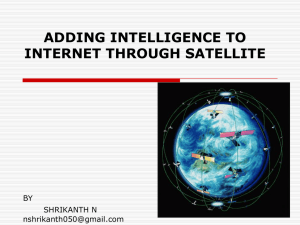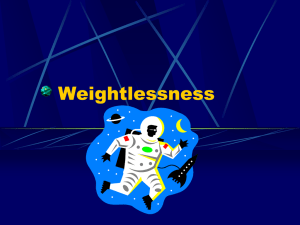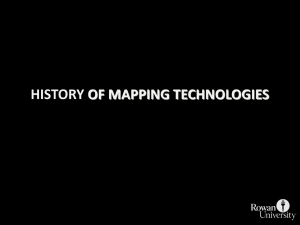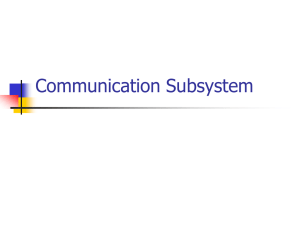Satellite acquisitons
advertisement
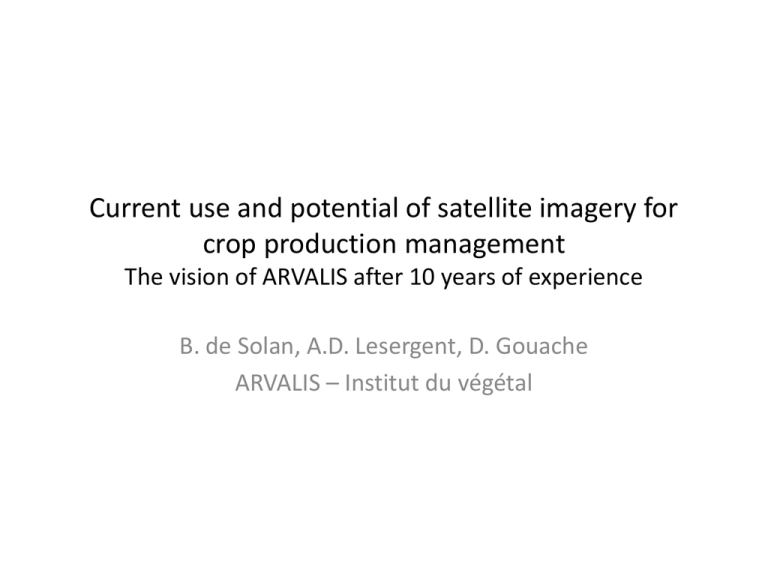
Current use and potential of satellite imagery for crop production management The vision of ARVALIS after 10 years of experience B. de Solan, A.D. Lesergent, D. Gouache ARVALIS – Institut du végétal ARVALIS presentation • ARVALIS: – a French applied research institute funded and run by farmers – on cereals, maize, pulses, potatoes and forage crops – in the field of: production, storage, preservation, first process (food and non food uses) • Provide advices for cropping practices – Evaluation of new varieties – Test new cropping practices – Develop decision support tools • Objective: to maintain a high level of production in a better way – Services to farmers, agricultural organizations and firms from the various chains, – using environment-friendly cropping systems. Increasing needs in observation data to optimize crop production • Environmental constraints are increasing – Goal: a reduction of 50% of treatments within 2008 - 2018 – A better water management • A need to keep production at a high level of quantity and quality – Increasing needs for food – New uses of agro products (bio fuel, bio materials) – Strict rules on products’ quality (mycotoxins) • A fast evolution of agricultural products prices: requires a better harvest forecast Decision support tools: requirements The farmer has to take decisions - Which crop ? - Which variety? - Amount and timing of nitrogen application? - Irrigation? - Herbicide, pesticide application? - … Asks Service provider Information Needs Strategic decisions Economic context Grain market + Law Environmental Rules + Field trials Technical references + Agronomic models (DST) Tactical decisions Farmer’s field observations - Soil Climate Vegetation Existing DST in France The case of nitrogen management • 3 kinds of vegetation based tools are used: - Leaf scale tools (HNTester ® = SPAD) Tractor borne sensors (Yara Nsensor®, GreenSeeker®, CropCircle®, …) Satellite imagery (Farmstar, …) • 15 - 20 % of crop lands are managed with a DST for nitrogen applications Too low ! • Due to lack of observations availability (spatially and temporally) and cost of products • Use of satellite observation has strong interests for a large development of DST: - No investment / tractor borne sensors Control possible on calculation process (centralized processing) Monitoring interesting at different scales (farmer but also cooperatives, traders) The spatial resolution fits well application requirements (10 m) From satellite to the farmer : a long way! Satellite products processing : LAI Chlorophyll content Building semi empirical relationships: - Biomass = f(LAI, phenology, cultivar) - Total nitrogen uptake = f(Chlorophyll, cultivar) Typical nitrogen recommendation based on: - Yield potential - Total biomass at given development stages - Total nitrogen uptake at given development stages Farmer wants application maps: Time of application (phenology) <- Meteorological data Nitrogen amount <- vegetation observation data Support tools provided by FARMSTAR Growing situation Previsional total amount of N Sept Oct Nov Dec Janv Updated yield potential Lodging risk assessment Fev Mars Season summary Last dressing application Avril Mai Juin Juillet Geographic cover of Farmstar 2012 Contracted areas 620.000 ha Satellite acquisitons : 61 SPOT HRV images 15 Formosat images A strong field technical support 2012 11540 Farmers 25 Coops 620 000 ha contracted Wheat : 340 000 ha Barley : 60 000 ha Colza : 220 000 ha 730 technicians 13 Engineers Delivered information • Application map + phenology • Compatible with sprayers for VRA Present limitations • Lack of dynamic data • Need of an important parameterization to match satellite information and agronomic variables • Need of airborne flights for Chl content estimation Phenotyping: an opportunity for a better integration of sensors observations in the farmer practices • Need for a better match between sensors observations and agronomic references and tools: - More ground based acquisition to develop new DST based on reflectances or Vegetation indices High quality of satellite data to match these ground measurements • Possible through phenotyping applications: - Used for cultivar selection - Usable to bridge the gap between satellite images and application Recommandations for Sentinel-2 exploitation for agricultural monitoring Satellite data pre-processing: - Geometric corrections - Atmospheric corrections Reflectances Top of Canopy Sentinel 2 satellite Application map Field control: - Connection with farmers - Field validation measurements Ground based researches: • Biophysical variables retrieval specific of a crop/variety Design new DST using sensor based Data management: - Storage - Computation - Delivery Farmer Recommandations Technical aspects • Resolution: 10 m ok for major annual crops (wheat, maize, …) • 1-2 acquisitions / week during fast growing periods • Dynamics characterization • Spectral configuration • Red edge bands for chlorophyll estimation • High quality of pre processing: – – – – Geometric correction (ortho rectified) Atmospheric corrections -> Reflectance TOC is important ! Clouds mask BRDF corrections Recommandations Operational aspects • Service continuity insurance for services development: 20 years is perfect! • Fast delivery: 3 days between acquisition and delivery – 1 day for raw data access • Free access for a larger diffusion and new services development • Many new products can be designed, not proposed due to costs: – irrigation – services for crops with small area – intermediate crops nitrogen catchment, … • Will put satellite imagery as the key observation way for crops management Research needs • Demonstrate that satellite reflectances are comparable with ground based reflectances measurements • Demonstrate how to optimize the use of multispectral reflectances data in DST to reduce field parameterization effort – E.g. : Link between Chl content and Nitrogen content • Demonstrate how a better dynamics characterization allows a better crop management




